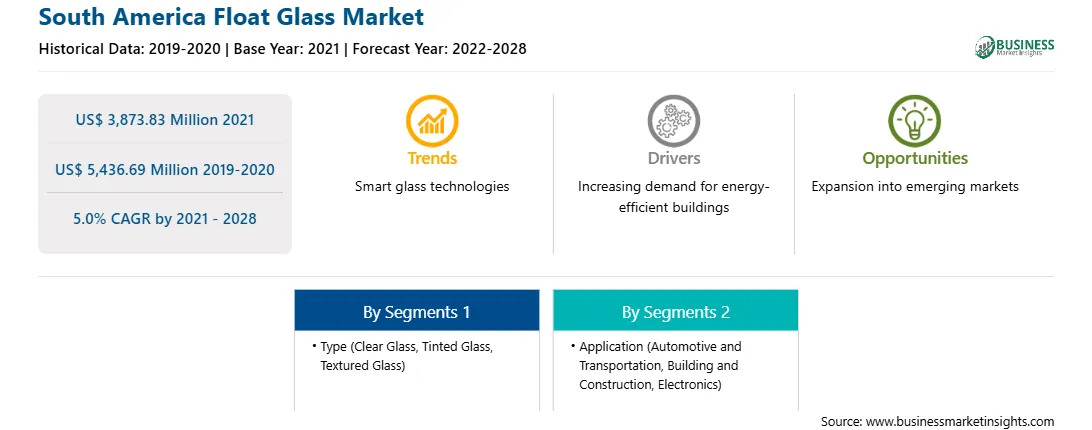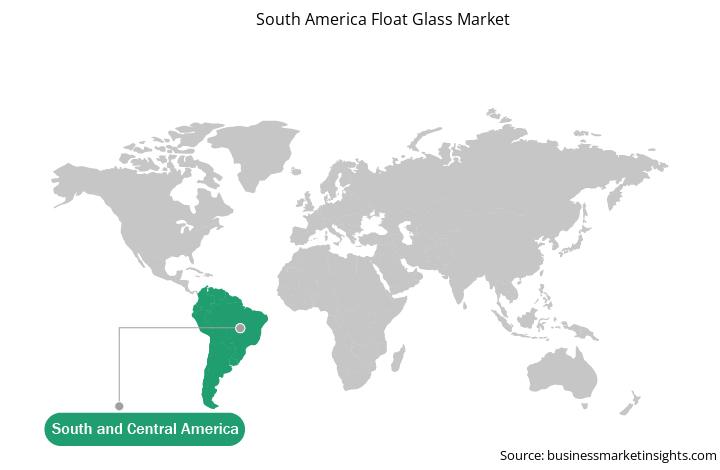Float glass is manufactured through a melting process, where recycled glass, lime, silica sand, potash, and soda are melted in a furnace and floated onto a bed of molten tin. Float glass is being increasingly used in the building & construction industry, which includes the residential, commercial, and industrial sectors. Float glass has a high degree of light transmission, the ability to produce a range of colors and opacities, and good chemical inertness, which increased its demand from the construction industry. The float glass is used for windows and doors in the residential sector, serving both aesthetic and functional applications. It is also being increasingly utilized in interior design and modern architecture. In the commercial sector, float glass is in demand as it provides an attractive and easy-to-maintain exterior surface. Float glass offers light and heat transmittance, influencing the amount of heating and cooling required inside a building according to different seasons and climates. The float glass is also being used as display windows in the retail outlets due to its transparent nature, hardness, and ease of cleaning. Due to the rise in environmental concerns, there has been an increased demand for float glass in the construction industry as it helps in achieving Leadership in Energy and Environment Design (LEED) certification for residential and commercial constructions. The rise in consumer awareness about the safety of buildings and an increased focus on maintaining the government's building codes are expected to increase the demand for float glass further. Thus, the increasing demand for float glass from the building & construction industry will fuel the growth of the SAM float glass market during the forecast period.
In case of COVID-19, SAM is highly affected especially Brazil, followed by Argentina, Peru, Chile, and Ecuador among others. The government of South and Central America has taken an array of actions to protect its citizens and combat the spread of the COVID-19 virus through lockdowns, trade bans, and travel restrictions. This may have a direct impact on the growth of the float glass market due to significant disruptions in terms of sourcing of raw materials from suppliers as well as temporary closures of manufacturing base due to indefinite lockdowns and temporary quarantines. However, the demand for float glass is expected to increase in the region as the economies are recovering and vaccination drives are being adopted.
With the new features and technologies, vendors can attract new customers and expand their footprints in emerging markets. This factor is likely to drive the SAM float glass market. The SAM float glass market is expected to grow at a good CAGR during the forecast period.
Strategic insights for the South America Float Glass provides data-driven analysis of the industry landscape, including current trends, key players, and regional nuances. These insights offer actionable recommendations, enabling readers to differentiate themselves from competitors by identifying untapped segments or developing unique value propositions. Leveraging data analytics, these insights help industry players anticipate the market shifts, whether investors, manufacturers, or other stakeholders. A future-oriented perspective is essential, helping stakeholders anticipate market shifts and position themselves for long-term success in this dynamic region. Ultimately, effective strategic insights empower readers to make informed decisions that drive profitability and achieve their business objectives within the market.

| Report Attribute | Details |
|---|---|
| Market size in 2021 | US$ 3,873.83 Million |
| Market Size by 2028 | US$ 5,436.69 Million |
| Global CAGR (2021 - 2028) | 5.0% |
| Historical Data | 2019-2020 |
| Forecast period | 2022-2028 |
| Segments Covered |
By Type
|
| Regions and Countries Covered | South and Central America
|
| Market leaders and key company profiles |
The geographic scope of the South America Float Glass refers to the specific areas in which a business operates and competes. Understanding local distinctions, such as diverse consumer preferences (e.g., demand for specific plug types or battery backup durations), varying economic conditions, and regulatory environments, is crucial for tailoring strategies to specific markets. Businesses can expand their reach by identifying underserved areas or adapting their offerings to meet local demands. A clear market focus allows for more effective resource allocation, targeted marketing campaigns, and better positioning against local competitors, ultimately driving growth in those targeted areas.

The South America Float Glass Market is valued at US$ 3,873.83 Million in 2021, it is projected to reach US$ 5,436.69 Million by 2028.
As per our report South America Float Glass Market, the market size is valued at US$ 3,873.83 Million in 2021, projecting it to reach US$ 5,436.69 Million by 2028. This translates to a CAGR of approximately 5.0% during the forecast period.
The South America Float Glass Market report typically cover these key segments-
The historic period, base year, and forecast period can vary slightly depending on the specific market research report. However, for the South America Float Glass Market report:
The South America Float Glass Market is populated by several key players, each contributing to its growth and innovation. Some of the major players include:
The South America Float Glass Market report is valuable for diverse stakeholders, including:
Essentially, anyone involved in or considering involvement in the South America Float Glass Market value chain can benefit from the information contained in a comprehensive market report.